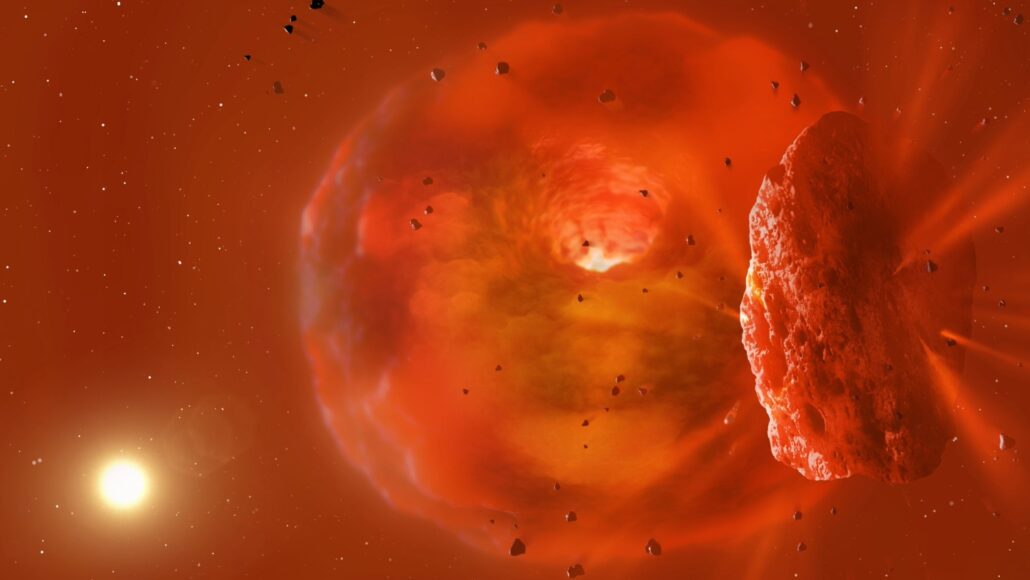Questions for ‘In a first, astronomers spot the aftermath of an exoplanet smashup’

The collision of two exoplanets appears to have left behind a donut-shaped cloud of vaporized rock and water (illustrated). Such a plume would seem to explain an infrared glow visible to telescopes.
Mark Garlick